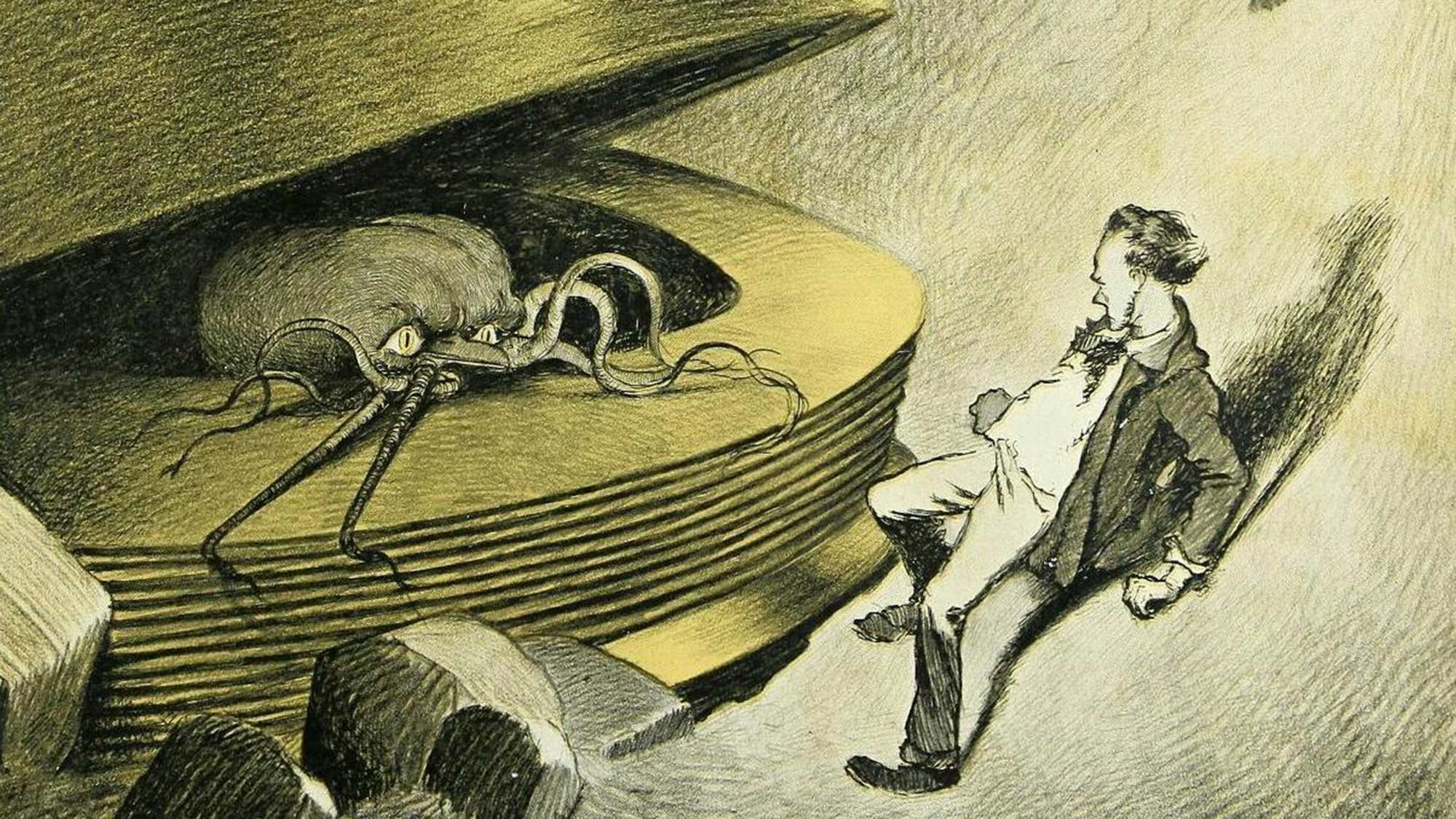Technology
100 years of aliens: from Martian beavers to little gray men

Galileo wrote in 1610 Sidereus Nuncius (The star messenger) about the similarities between the moon and the earth which he spied through his telescope, thus paving the way for the possibility and probability of life on the moon: ‘So if anyone wants to revive the ancient opinion of the Pythagoreans that the moon If it were another Earth, the brighter part would represent the land surface, while the darker part would better represent the water surface.’
As far back as ancient Greece, Democritus, a Greek philosopher who wrote extensively about the cosmos and contributed the word “atoms” to science, speculated that space was populated with habitable worlds.
It was probably 1898 by HG Wells The War of the Worlds, a novel about a Martian invasion of Earth that fueled our collective imagination (and fear) about extraterrestrial life. But Wells wasn’t the first in the 19th century to document a fictional encounter with aliens. That honor could go to a Belgian author Joseph Henri Honoré Boex (pseudonym JH Rosny Aîné – “aîné” means elder, he had a younger brother with the same pseudonym), who wrote a novella in 1887, Les Xipehuzabout a battle between Neolithic nomadic tribes and a geometric, non-organic alien life form.
Wells likely based his novel on the then-popular speculation that Mars was lined with canals, a theory that arose from dark lines on the planet’s surface, first spied by Italian astronomer Giovanni Schiaparelli in 1877. Percival Lowell, a British astronomer , proposed that the dark lines were actually canals possibly constructed by an intelligent civilization. Such speculation has set in motion the enormous influence that our solar system’s red planet has had on our wild and colorful theories about extraterrestrial life.
In 1926, Hugo Gernsback – after which the coveted Hugo Awards are named – launched America’s first science fiction magazine, Amazing stories, including stories and images of such extraterrestrial life. Science fiction didn’t exist back then. The nascent genre, which blurred the lines between fiction and fact, was known as scientific.
In the 1960s, NASA launched a program dedicated to the search for extraterrestrial intelligence.SETI. Although the program was discontinued in 1993, several research initiatives for extraterrestrial life continue, including NASA’s own search for habitable worlds.
1906: War of the Worlds by HG Wells, originally published in 1898
Illustration by Henrique Alvim Correa for the 1906 French edition of HG Wells War of the Worlds. Martian battle machine in the Thames Valley.
On the eve of Halloween, 1938, Orson Welles broadcast a “news bulletin” based on HG Wells’ 1898 novel, The War of the Worlds. But he failed to reveal that his news bulletin describing a Martian invasion of New Jersey was fake, confusing listeners and causing some hysteria.

In 1929, the 100-inch Hooker Telescope at the Mount Wilson Observatory in California was the largest in the world and the best way to see distant worlds and galaxies. Photos of the moon’s surface taken with the 100-inch Hooker Telescope were detailed enough to reveal topographic relief, such as the rims and valleys of craters, but not detailed enough to capture possible life forms, especially lunar crustaceans.
It is no surprise that science writers and science fiction writers alike could credibly speculate about such lunar life. Popular science Contributing writer Thomas Elway made a compelling case in 1929 for the possibility of extraterrestrial life on the moon in the form of moon crabs, with hard outer shells to “prevent the loss of bodily fluids in airless space” and “eyes that would allow sunlight to enter food can change”. .”

In a 1930 story that may have crossed the line between science and fiction: Popular science Contributing writer Thomas Elway (of moon crab fame) makes the case for giant beavers as the dominant life form on Mars: “Now there is one creature on Earth for the development of whose counterpart the supposed conditions on Mars would be ideal. That animal is the beaver. It’s life on land or life in water. It has a fur coat to protect it from the 100 degrees below zero of the Martian night.”
To be honest, the best images of Mars looked real-world blurry marbles as seen in these photos taken with the 100-inch Hooker Telescope at the Mount Wilson Observatory in California. With only these images to work with, there was plenty of room for the imagination.

Weinbaum’s short story, originally published in Wonder Stories, is set in the early 21st century (approximately now) and depicts Martians as bird-like creatures. Of course, canals play a prominent role in Weinbaum’s Mars site.
1950s: gray aliens

Probably the most common alien form associated with human abductions. Gray aliens are known for their lanky humanoid shapes, bulbous eyes and large skulls. Whether these visions arose from the Roswell UFO incident of 1947, or have some other origin, they are certainly not considered friendly. This particular variant of an alien persisted for decades of science fiction, more recently in works like The X Files, StargateAnd countless other television shows and movies.
1968: Monoliths (Arthur C. Clarke, 2001: A space odyssey)

In Clarke’s science fiction classic, aliens are so much more advanced than humans that they can control and manipulate energy at will. Although they are not aliens, they are Stanley Kubrick’s iconic monoliths 2001: A space odyssey are machines that the aliens use to manipulate human evolution.
1979: Xenomorphs (Alien)

Alien Life took a distinct turn toward horror with Ridley Scott’s (director) 1979 film Alien. Artist HR Giger created the terrifying species known as Xenomorphs, a parasite that survives by hunting other species, such as humans.
Whether or not we humans as a civilization will survive long enough to encounter intelligent extraterrestrial life, these highlights from the earlier parts of the last century show how excited we are to imagine what cosmic visitors might look like.













